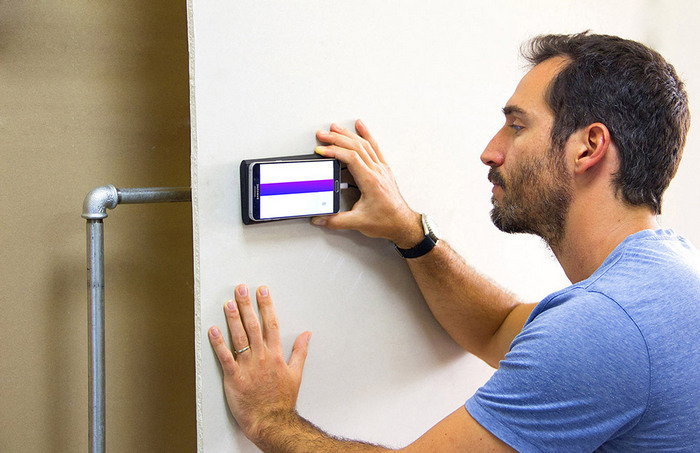Smartphone Super Vision: Chip Lets You See Through Walls and Cardboard
Researchers have developed a revolutionary technology that allows you to look inside objects without using harmful X-rays. A tiny chip, small enough to be integrated into a smartphone, can take images of items through cardboard and other opaque materials. This innovation brings us closer to “X-ray vision” capabilities reminiscent of Superman’s superpowers.
Scientists from the University of Texas at Dallas and Seoul National University, inspired by Superman comics, have created a unique imaging system. Thanks to a microchip and special data processing algorithms, the technology literally lets you “see” inside packages and even through walls, all without causing harm.
“This technology is similar to Superman’s X-ray vision,” said Kenneth O, professor of electrical engineering at UTD and director of the Texas Analog Center of Excellence (TxACE). “Of course, we use signals in the 200 to 400 gigahertz range instead of X-rays, which can be harmful.”
The technology was first demonstrated in 2022 and is the result of more than 15 years of work by O and his team. The chip emits radiation in the terahertz (THz) range—electromagnetic waves with frequencies from 0.1 to 10 THz. These waves, invisible to the human eye and considered safe, have a higher frequency than radio and microwaves but are lower than infrared radiation.
In 2022, O demonstrated that beams at 430 GHz, generated by the microchip, could pass through fog, dust, and other obstacles that block visible light. The beams reflected off objects and returned to the microchip, where pixels captured the signal to create an image. This technology did not rely on external lenses to improve image clarity. The chip was manufactured using complementary metal-oxide-semiconductor (CMOS) technology, which is used to produce modern consumer processors, memory chips, and other digital devices.
CMOS technology proved to be an affordable way to generate and detect terahertz signals, especially at frequencies around 200 GHz and above, providing much better image resolution. The scientists improved the image quality of their 2022 model and made the technology compact enough to fit into a small device. The new chip used a 1×3 CMOS pixel array operating at 296 GHz and was a completely lensless solution.
“We developed a chip without lenses or optics so it could be integrated into mobile devices,” explained Wooyeol Choi, assistant professor of electrical and computer engineering at Seoul National University and one of the study’s authors. “The pixels that create images by detecting signals reflected from the target object are square-shaped and only 0.5 mm in size, about the size of a grain of sand.”
The technology was tested and successfully visualized various objects (a USB adapter, a blade, an integrated circuit, and a plastic washer) covered with cardboard from a distance of about one centimeter. The scientists intentionally scanned objects from such a close range for safety and privacy reasons, to prevent the device from being misused to scan the contents of bags and personal belongings. However, the researchers plan to develop the next version, which will be able to capture images from up to 12.7 cm (about 5 inches) away.
“It took 15 years of research to improve pixel performance by 100 million times. Combined with digital signal processing methods, this made the demonstration possible,” noted Brian Ginsburg, director of RF and high-speed research at Texas Instruments’ Kilby Labs. “Our breakthrough technology demonstrates the enormous potential of terahertz imaging.”
The scientists see many applications for their microchip in smartphones—from finding wooden studs behind walls and detecting cracks in pipes to scanning the contents of envelopes and packages. There is also potential for using this technology in medical applications.
The research was supported by the Texas Instruments Foundational Technology Research Program in millimeter waves and high-frequency microsystems, as well as the Samsung Global Research Outreach program.
The study was published in the journal IEEE Transactions on Terahertz Science and Technology.



